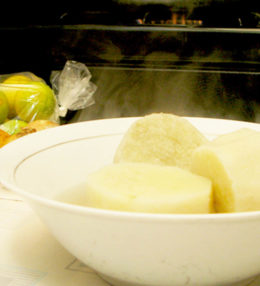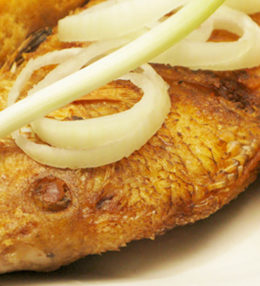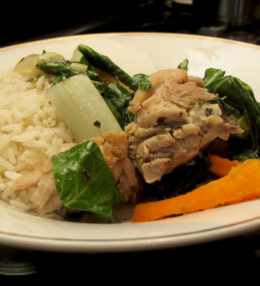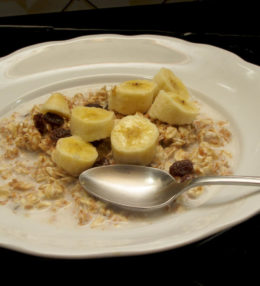- October 14, 2021
- by MiQuel Marvin Samuels
- 0 Like
- 0 / 5
- Cuisine: American Food, Jamaican/Caribbean Food
- Difficulty: Easy
-
Prep Time8 Mins
-
Cook TimeNone
-
Serving2
-
View875
This is edible wild plants salad recipe. Get the best salad dishes & salad food recipes. This typical salad is one of the most popular foods. All our salads are made with country seasonings. We have recipes for traditional salad dinner & for a typical lunch. Look on this recipe website to learn how to make this ordinary meal at home. These recipes are culinary arts from around the world food Show; Video Entertainment Network Website. Our slogan is “REMEMBER NOW.! Nature’s Food Brain Body & Harmony; Master Your Emotions…!” All Right..!
How to make a delicious edible wild plants salad?
CARIBBEAN JAMAICAN DINNERS CHEF RECOMMENDS USING HERBS to make this edible wild plants salad meal. It was made with country seasonings. Do not use artificial powdered seasonings! If you must, do not use plenty? To keep your immune system healthy use real natural herbs, spices and vegetables. This will give your salad meal a natural flavor; the food would taste more delicious. Plus you would not get an after taste in your mouth. And most importantly, your liver and other organs will love you for feeding them well. This chef cooks with fresh or dried herbs such as basil, cilantro or parsley, tarragon, marjoram, oregano, rosemary, and sage. Real natural spices such as pepper, pimento berries, dill seeds, pepper corn, whole cloves, etc. Vegetables like real natural onion, garlic, scallion or chives and ginger. Our website has the #1 best salad dishes & salad food recipes online. The #1 typical salad food, #1 salad most popular cooked food, #1 traditional salad recipe, the #1 salad cooked food shows.
How to keep clean when I make edible wild plants salad recipe?
This is how to keep your salad area in the kitchen clean while making edible wild plants salad. Put a clean kitchen rag in soap and water. Add several drops of bleach in it. Avoid using scrubbers! Squeeze the rag; remove excess water. Wipe the counter tops, kitchen appliances, and then stove clean. After that, wipe it again with just water or add several drops of bleach in the water. Some people use a dried rag/cloth to rub, and then buff the kitchen appliances until it gleams. Before you cook, wash your hands properly. To do this, add soap and water on your hands, rub it together until it suds. Rub between the fingers and nails, ensure to clean your hands properly. Rinse your hands properly, and then dry it with a clean paper towel.
Should I make edible wild plants salad with natural organic grown vegetables; or chemical manufactured vegetables?
The truth is chemical manufactured vegetables are grown with fertilizer. Organic farmers produce natural vegetables by adding organic fertilizer made with natural bushes from nature. What I suspected, you will be putting your life at risk to develop cancer. If you eat vegetables grown with chemical fertilizer constantly for three maybe four years or longer. Be mindful!
Ingredients
Edible Wild Plants Salad
Addictive: (Add any of the following goodies your Edible Wild Plants Salad, after adding the dressing)
Nutrition
per any serving
- Daily Value*
-
Vegetable Fibers100%
- Eat Edible Wild Plants Salad for dinner.
Directions
Instructions: Step#1 Wild Plant Salad; Step#2 How to use these wild plants properly.
1) First prepare the vegetables by peeling, washing and dicing, put aside for later use. 2) Than combine the favorite edible wild plant in bowl. 3) Enjoy eating Edible Wild Plant Salad, it is good choice
MOST POPULAR WILD EDIBLE AND MEDICINAL PLANTS: 1) White Mustard (Synapsis alba) - You can eat all parts of the plant- seeds, flowers, and leaves. 2) Sheep Sorrel (Rumex acetosella) - Sheep sorrel contains oxalates and shouldn’t be eaten in large quantities. You can eat the leaves raw. They have a nice tart, almost lemony flavor. 3) Purslane (Portulaca oleracea) - Purslane grows from the beginning of summer to the start of fall. You can eat purslane raw or boiled. If you’d like to remove the sour taste, boil the leaves before eating. 4) Prickly Pear Cactus (Opuntia) - Before eating the plant, carefully remove the small spines on the outer skin or else it will feel like you’re swallowing a porcupine. You can also eat the young stem of the prickly pear cactus. It’s best to boil the stems before eating. 5) Plantain (Plantago) - Like most plants, the leaves tend to get bitter tasting as they mature. Plantain is very high in vitamin A and calcium. It also provides a bit of vitamin C. 6) Kelp (Alaria esculenta) - Eat it raw or include it in a soup. Kelp is a great source of folate, vitamin K, and lignans. 7) Green Seaweed (Ulva lactuca) - This stuff is found in oceans all over the world. After you pull green seaweed from the water, rinse with fresh water if available and let it dry. You can eat it raw or include it in a soup. 8) Fireweed (Epilobium angustifolium) - You can eat the stalk of the plant as well. The flowers and seeds have a peppery taste. Fireweed is a great source of vitamins A and C. 9) Field Pennycress (Thalspi vulgaris) - Pennycress is a hyperaccumulator of minerals, meaning it sucks up any and all minerals around it. General rule do not eat pennycress if it’s growing by the side of the road or is near a Superfund site. 10) Dandelion (Taraxacum officinale) - The entire plant is edible- roots, leaves, and flower. Eat the leaves while they’re still young; mature leaves taste bitter. 11) Curled Dock (Rumex crispus) - You can eat the stalk raw or boiled. Just peel off the outer layers first. It’s recommend that you boil the leaves with several changes of water in order to remove its naturally bitter taste. 12) Chickweed (Stellaria media) - They usually appear between May and July. You can eat the leaves raw or boiled. They’re high in vitamins and minerals. 13) Chicory (Cichorium intybus) - You can eat the entire plant. Pluck off the young leaves and eat them raw or boil them. The chicory’s roots will become tasty after boiling. And you can pop the flowers in your mouth for a quick snack. 14) Clovers (Trifolium) - You can spot them by their distinctive trefoil leaflets. You can eat clovers raw, but they taste better boiled. 15) Cattail (Typha) - The corn dog-looking female flower spike can be broken off and eaten like corn on the cob in the early summer when the plant is first developing. It actually has a corn-like taste to it. 16) Burdock (Arctium lappa) - You can eat the leaves and the peeled stalks of the plant either raw or boiled. The leaves have a bitter taste, so boiling them twice before eating is recommended to remove the bitterness. The root of the plant can also be peeled, boiled, and eaten. 17) Asparagus (Asparagus officinalis) - It’s a great source of source of vitamin C, thiamine, potassium and vitamin B6. Eat it raw or boil it like you would your asparagus at home. 18) Amaranth (Amaranthus retroflexus and other species) - It’s recommended that you boil the leaves to remove the oxalic acid and nitrates. Don’t drink the water after you boil the plant. With that said, you can eat the plant raw if worse comes to worst.
Conclusion
Support the Chefs on this website, go to shop purchase our cookbooks.
MiQuel Marvin Samuels
MIQUEL MARVIN SAMUELS (Proper Nutrition Chef) - Natural Cooking Author of Cookbooks: JAMAICAN DINNERS, JAMAICAN BREAKFASTS and MORE; Author: THE SECRET TO START AND DEVELOP YOUR BUSINESS; He WON JCDC 2005, 06 & 07 (Visual Arts).
You May Also Like
Edible Wild Plants Salad
Ingredients
Edible Wild Plants Salad
Addictive: (Add any of the following goodies your Edible Wild Plants Salad, after adding the dressing)
Follow The Directions
Instructions: Step#1 Wild Plant Salad; Step#2 How to use these wild plants properly.

1) First prepare the vegetables by peeling, washing and dicing, put aside for later use. 2) Than combine the favorite edible wild plant in bowl. 3) Enjoy eating Edible Wild Plant Salad, it is good choice

MOST POPULAR WILD EDIBLE AND MEDICINAL PLANTS: 1) White Mustard (Synapsis alba) - You can eat all parts of the plant- seeds, flowers, and leaves. 2) Sheep Sorrel (Rumex acetosella) - Sheep sorrel contains oxalates and shouldn’t be eaten in large quantities. You can eat the leaves raw. They have a nice tart, almost lemony flavor. 3) Purslane (Portulaca oleracea) - Purslane grows from the beginning of summer to the start of fall. You can eat purslane raw or boiled. If you’d like to remove the sour taste, boil the leaves before eating. 4) Prickly Pear Cactus (Opuntia) - Before eating the plant, carefully remove the small spines on the outer skin or else it will feel like you’re swallowing a porcupine. You can also eat the young stem of the prickly pear cactus. It’s best to boil the stems before eating. 5) Plantain (Plantago) - Like most plants, the leaves tend to get bitter tasting as they mature. Plantain is very high in vitamin A and calcium. It also provides a bit of vitamin C. 6) Kelp (Alaria esculenta) - Eat it raw or include it in a soup. Kelp is a great source of folate, vitamin K, and lignans. 7) Green Seaweed (Ulva lactuca) - This stuff is found in oceans all over the world. After you pull green seaweed from the water, rinse with fresh water if available and let it dry. You can eat it raw or include it in a soup. 8) Fireweed (Epilobium angustifolium) - You can eat the stalk of the plant as well. The flowers and seeds have a peppery taste. Fireweed is a great source of vitamins A and C. 9) Field Pennycress (Thalspi vulgaris) - Pennycress is a hyperaccumulator of minerals, meaning it sucks up any and all minerals around it. General rule do not eat pennycress if it’s growing by the side of the road or is near a Superfund site. 10) Dandelion (Taraxacum officinale) - The entire plant is edible- roots, leaves, and flower. Eat the leaves while they’re still young; mature leaves taste bitter. 11) Curled Dock (Rumex crispus) - You can eat the stalk raw or boiled. Just peel off the outer layers first. It’s recommend that you boil the leaves with several changes of water in order to remove its naturally bitter taste. 12) Chickweed (Stellaria media) - They usually appear between May and July. You can eat the leaves raw or boiled. They’re high in vitamins and minerals. 13) Chicory (Cichorium intybus) - You can eat the entire plant. Pluck off the young leaves and eat them raw or boil them. The chicory’s roots will become tasty after boiling. And you can pop the flowers in your mouth for a quick snack. 14) Clovers (Trifolium) - You can spot them by their distinctive trefoil leaflets. You can eat clovers raw, but they taste better boiled. 15) Cattail (Typha) - The corn dog-looking female flower spike can be broken off and eaten like corn on the cob in the early summer when the plant is first developing. It actually has a corn-like taste to it. 16) Burdock (Arctium lappa) - You can eat the leaves and the peeled stalks of the plant either raw or boiled. The leaves have a bitter taste, so boiling them twice before eating is recommended to remove the bitterness. The root of the plant can also be peeled, boiled, and eaten. 17) Asparagus (Asparagus officinalis) - It’s a great source of source of vitamin C, thiamine, potassium and vitamin B6. Eat it raw or boil it like you would your asparagus at home. 18) Amaranth (Amaranthus retroflexus and other species) - It’s recommended that you boil the leaves to remove the oxalic acid and nitrates. Don’t drink the water after you boil the plant. With that said, you can eat the plant raw if worse comes to worst.






